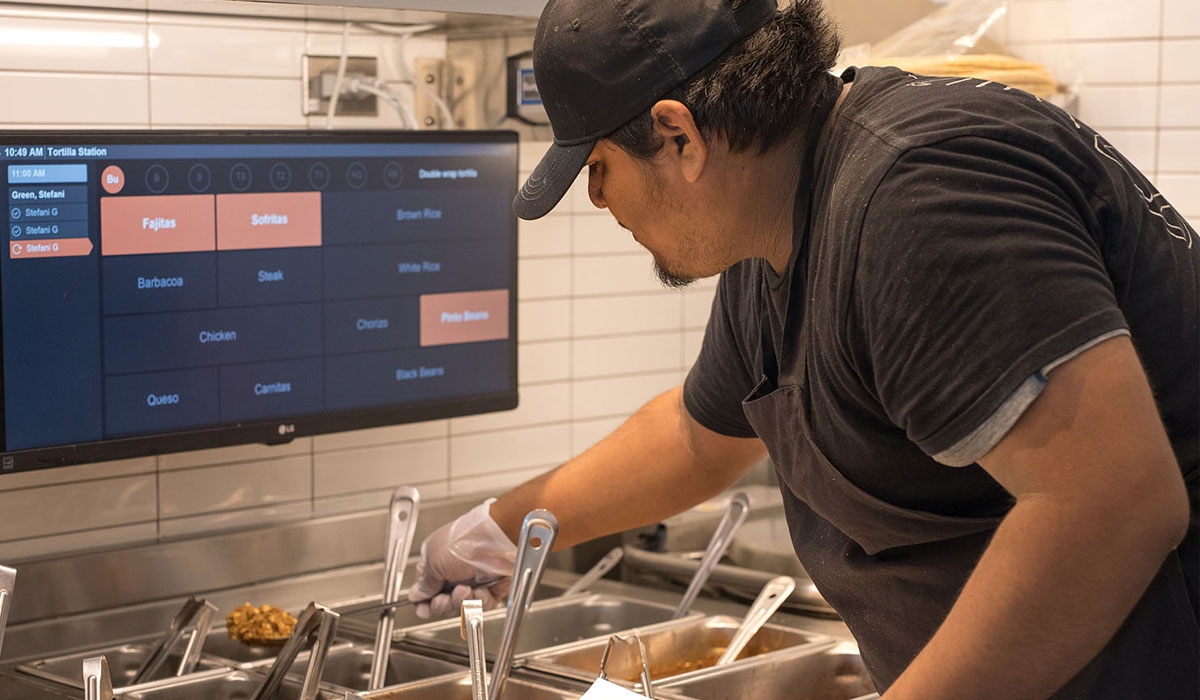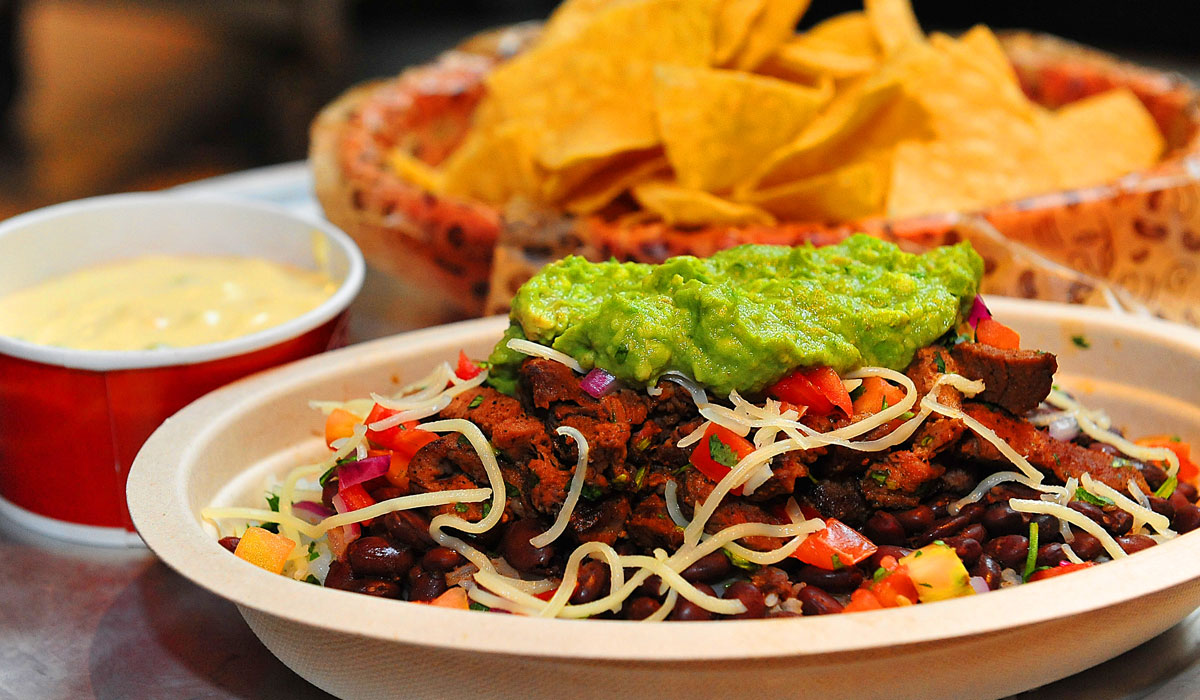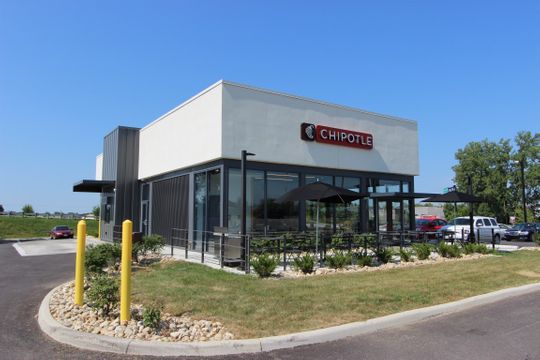Chipotle has been heavily scrutinized since its 2015 food-safety setback, especially so under the new regime of CEO Brian Niccol, who took the reins in March 2018.
And quarter after quarter, Niccol and Co. have proved that their formula for reinventing Chipotle while protecting its “Food with Integrity” mantra is successfully ushering the brand into a more profitable future.
That seems to be especially true of this year’s third quarter. The Mexican fast-casual leader reported Tuesday afternoon that its quarterly sales were $1.4 billion, up 14.6 percent over last year. Year-over-year comparable sales growth stood at an impressive 11 percent, with 7.5 percent comparable transaction growth.
LOOKING BACK AT 2019 SO FAR:
Q2: Chipotle surges ahead with double-digit sales growth, but there’s still room to go
Q1: Digital sales spike 100 percent to start the year
How Chipotle is winning the ‘talent crisis’
It was Chipotle’s seventh consecutive quarter of sales increases, and perhaps the biggest sign to date that Niccol’s strategy—which he emphasized to QSR earlier this year is built around removing friction between the guest and the restaurants—is working.
So, what specifically is behind the comeback? As Niccol said Tuesday during the company’s Q3 review, there are five key strategies the leadership team has outlined as being critical to success.

1. A digital transformation
One of the most significant changes Niccol brought to Chipotle was a stronger commitment to the digital experience. That’s included digital-order pick-up shelves and third-party delivery powered through the company’s app and website, among other digital evolutions.
“Reducing friction and providing more convenient access for our guests has been critical to increasing our digital system penetration over the past couple of years,” Niccol said on the call.
The results have been staggering. Digital sales were up 88 percent, year-over-year, in Q3 and, at $257 million, account for 18.3 percent of company sales. Niccol said Chipotle is “knocking on the door of digital becoming a $1 billion business.”
Facilitating that growth is the second make line in Chipotle restaurants dedicated to digital orders. Niccol said it has now been installed at all relevant locations.
“Now that we have the digital make lines installed, we are focused on ensuring that execution for this large and growing business matched that of the traditional frontline,” he said.
As with most other restaurant companies, third-party delivery has provided Chipotle with another access point for customers hungry for its burritos, bowls, tacos, salads, and quesadillas. But while many have fretted that the delivery services simply spread existing business around to other channels—while taking a large chunk off the top of each order, to boot—Niccol said that’s not the case at Chipotle.
“Delivery remained a key driver of our digital growth given enhanced capabilities on our app and website, as well as our expanded availability for more than 97 percent of our restaurants,” he said. “Importantly, digital remains highly incremental, and we continue to see residual lift in delivery sales that last beyond any promotion.”
2. A massively popular loyalty program
In March, Chipotle rolled out its new Chipotle Rewards loyalty program nationally. Guests earn 10 points for every $1 spent in the restaurant, online, or in the app, with 1,250 points resulting in a free entrée.
Niccol reported on the call that the program now has 7 million enrolled members, including 2 million new members in the last quarter. He added that Chipotle has “only scratched the surface on database marketing” through the rewards platform.
Indeed, the company’s strategy with its loyalty program is not only to drive sales through the channel, but also to engage customers beyond their traditional Chipotle experiences.

“We are encouraged by early signs of transaction increases across all frequency bands,” he said. “And going forward, we’ll double down on our ability to leverage this data to incent behaviors. We expect this lever to become a bigger driver over time as we gain more experience gathering customer insight while continuing to expand our digital platform.”
But it’s not just loyal Chipotle customers who are made valuable through the rewards platform, BTIG managing director and restaurant analyst Peter Saleh wrote in his assessment on the company’s Q3 performance.
“Management indicated that loyalty customers tend to be new and light users of the brand, suggesting it is driving incremental traffic to the stores,” he said.
3. A process for innovation
Before Niccol’s tenure, Chipotle was not exactly known for its innovation. Yes, the quality of the menu was high, and the brand arguably created the trend toward chef-driven fast casuals, particularly with the help of its classically-trained-chef founder, Steve Ells.
But the menu rarely changed, and some of its bigger introductions—for example, queso in 2017—were widely seen as failures. Now, however, Chipotle is more committed to testing new products and responding to consumer demand. Niccol said Tuesday that a stage-gate process for innovation—introducing new platforms in a few markets before rolling out to a wider audience—is a core strategy for the company moving forward. That process has already helped roll out things like the Lifestyle Bowls and the Chipotle Rewards program.
Recently, it helped introduce the Carne Asada limited-time offering, which Niccol said has received “terrific customer feedback.”
“As great as Carne Asada tastes,” he said, “its success is amplified by all elements of our strategy coming together in unison, specifically digital providing more frictionless access; marketing-enhancing awareness and emphasizing the deliciousness of Carne Asada; operations delighting our guests with great hospitality and throughput; and our supply chain ensuring we have the highest-quality ingredients that meet our Food with Integrity standards.”
Chipotle is now testing Queso Blanco salads and quesadillas through the stage-gate process. Niccol added that Chipotle will not sacrifice throughput or add operational complexity when adding new menu items.

4. A more visible, accessible approach
Niccol has emphasized in his time at Chipotle that his goal is to make the brand more visible to consumers, and “leading culture, not reacting to it.” The company has taken several steps in doing that, including hiring Tressie Lieberman—a former digital leader at Yum! Brands—as VP of digital and off-premises.
Lieberman has helped oversee things like the delivery platform and rewards program. But she’s also guided Chipotle to plug more into the youth culture. For example, the company has thrived using TikTok, boasting the platform’s highest-performing branded challenge in the U.S. The #GuacDance challenge on TikTok, in celebration of National Avocado Day in August, drove more than 250,000 video submissions with nearly 430 million video starts in its six-day run. It also helped Chipotle sell more than 802,00 sides of guacamole.
“If you think about something like TikTok,” Lieberman told QSR earlier this month, “it’s a place for our customers where they’re certainly spending time talking about Chipotle. We wanted to speak to them in their language that they’re using on the platform.”
These efforts, paired with the ongoing “Behind the Foil” TV spots highlighting real team members preparing food, “are designed to increase transactions and grow sales by driving culture, driving a difference, and ultimately driving a purchase,” Niccol said.
Finally, drive thrus have proved to be incredibly successful in Chipotle’s quest to be more visible and accessible to customers. While the company famously rejected the notion of drive thru prior to Niccol’s appointment, it has in the last year wholeheartedly embraced the new Chipotlane strategy, wherein customers at certain locations can place a mobile order and then pick up through a specially designated drive-thru lane.
CFO Jack Hartung said on the call that of about 80 new restaurants under construction today, roughly half include a Chipotlane. He expects there to be about 60 drive-thru locations at the end of 2019.
“Based on the early success of Chipotlane, we shifted our real estate strategy to seek more sites that can accommodate a Chipotlane,” Hartung said. He added that due to the Chipotlane’s longer construction time, the company’s anticipated new restaurants for 2019 would be on the lower end of its projected 140–155 range, with some Chipotlane locations getting pushed to a 2020 open.
Looking forward to next year, Hartung said that of 150–165 planned new restaurants for 2020, more than half will have drive thru.

Saleh added in his assessment that Chipotlanes could prove to be great sales drivers for the fast casual.
“We expect the shift in development to a greater mix of Chipotlanes in 2020 will help drive sales volumes, margins, and digital mix all higher given the likely superior economics of these units,” he wrote, adding that quick serves with drive thrus tend to generate 40 percent higher sales volumes than locations without a drive thru.
“This would suggest that a Chipotlane restaurant could generate nearly $3 [million] in sales once awareness has been established, with a cost to build only slightly higher at [about $850,000],” Saleh says. “Given the higher sales volume and 50 percent higher digital mix (about 27 percent), we believe restaurant-level margins would be in the mid-25 percent range or higher, compared with the system average of around 21 percent. This suggests cash-on-cash returns north of 80 percent for Chipotlane units and strongly supporting the decision to prioritize these units going forward.”
Of course, Chipotle isn’t the only fast casual to reverse course on the drive-thru operation. Other brands, like CAVA and Pie Five, have similarly found that an outdoor lane—particularly when supporting mobile orders—can be a wise investment without negatively affecting customer impressions of the brand.
5. A better company culture
The fifth strategy Niccol pointed out as being key to Chipotle’s ongoing success is running successful restaurants with great culture. And that culture begins, he said, with the crew members on the front lines.
“We know cultivating a better world includes investing in our people, and we believe that’s the right approach in creating an environment where our employees can thrive professionally as well as personally and be in a position to win not only today, but also in the future,” Niccol said.
He pointed to enhanced training and development, premium employee benefits, and an improved bonus for more than 2,600 employees as examples of that improved restaurant culture.
There’s also the recent announcement that Chipotle will provide an opportunity for all eligible employees to pursue debt-free college degrees through an expansion of its Chipotle Cultivate Education platform. The brand will cover 100 percent of tuition costs up front for 75 different types of business and technology degrees via partner Guild Education. The company is doing so “to give employees the chance to gain the skills and knowledge necessary to succeed in the evolving 21st century job market,” it said in a statement.
The result of this investment in its employees? Niccol said Chipotle has the luxury of hiring better employees in a tight labor market, and having better employees helps the company ensure consistently great restaurant experiences and even improve customer throughput—all of which, of course, can help the company do better sales.
“I believe we are still in the early stages of our journey, and we need to stay focused on our priorities and executing flawlessly to support our growth while providing our customers with the experience they expect from Chipotle,” he said. “We have a unique brand, and I love the passion and determination that I see during my restaurant visits as our crew members constantly strive to be better today than they were yesterday.”










